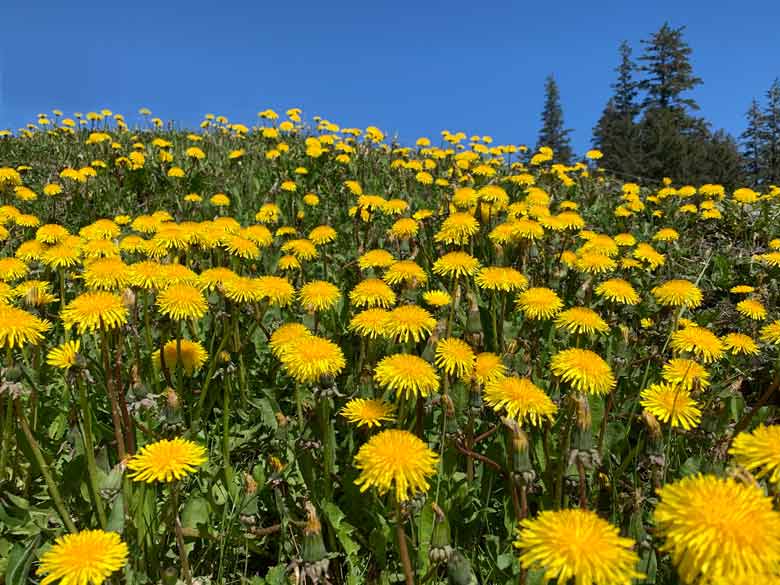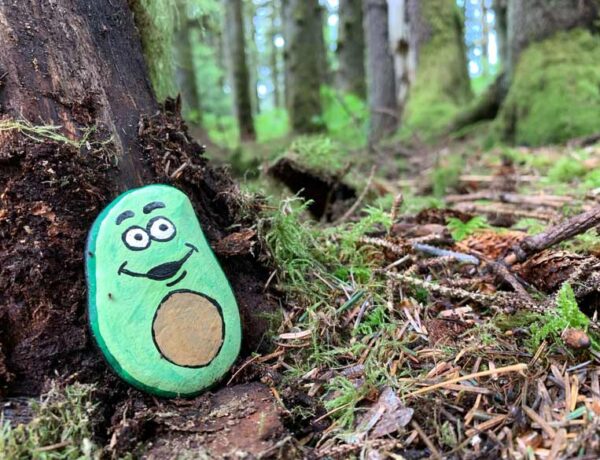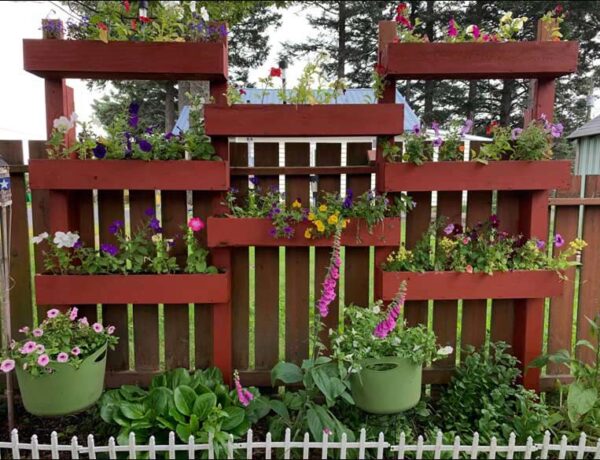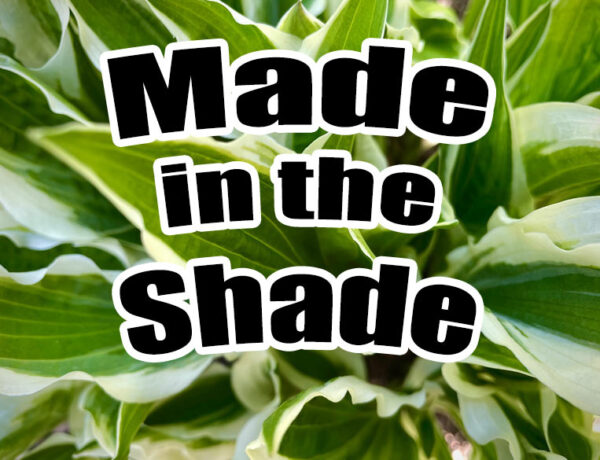With the return of sunshine, comes the return of dandelions, raising their yellow heads above your lush, green lawn. Against all odds, this is my annual plea to NOT mow down these yellow flowers.
I know, I know. The appearance of dandelions nestled among one’s otherwise pastoral sea of green grass is enough to send many homeowners over the edge.
But hear me out…
Dandelions will keep coming back no matter what you do, so learn to either eat them, enjoy them, or think like a bumblebee. In other words, let them be mellow-yellow for a while so bumblebees and other pollinators can enjoy a decent meal.
Dandelions are often the first real meal after spending months hibernating over the winter. Underground. Alone. (You might enjoy my article, How to Love a Bumblebee featuring the little movie I made).
That said if you insist on trying to get rid of them, avoid chemical poisons. Listen up to what Anchorage garden columnist Jeff Lowenfels says:
[perfectpullquote align=”full” bordertop=”false” cite=”” link=”” color=”” class=”” size=””]“Under no circumstances should any self-respecting gardener and human being use a weed and feed product.”[/perfectpullquote]
Even if they go on sale to try and make you feel better.
[perfectpullquote align=”full” bordertop=”false” cite=”” link=”” color=”” class=”” size=””]”No poisons are allowed anymore in gardens and yards,” says Jeff. “It is a new rule.”[/perfectpullquote]
The return of sunshine also means humans are bounding out of their houses, seedlings in hand, ready to do some transplanting…
Stop. Look. Listen.
What’s lovely to you and me, insofar as weather goes, is potentially deadly to a broccoli seedling.
[Hi, Marion Owen here. This article was originally published in the Kodiak Daily Mirror, the hometown newspaper for Kodiak, Alaska. I invite you to access the archive page for my past columns, written each week since 1986].
Your questions answered…
Q: When IS the best time to transplant seedlings outside?
Answer: When it’s NOT sunny, warm, and lovely.
I covered this topic a couple of weeks ago, but I’m getting questions about holding off on sunny days…
Looking at the weather forecast, we’re do for a stretch of nice weather. Nice, may I remind you, for us humans…
[perfectpullquote align=”full” bordertop=”false” cite=”” link=”” color=”” class=”” size=””] In the hardening-off process, it’s critical to keep seedlings well-watered, but not swimming. [/perfectpullquote]
If roots are poking out of the bottom of the container, water the seedlings from the bottom so the exposed roots are kept damp.
Speaking of exposed roots, if you can’t get around to transplanting for another couple of weeks, then pot them up to the next larger container.
[perfectpullquote align=”full” bordertop=”false” cite=”” link=”” color=”” class=”” size=””] Bottom line: Transplant on a cloudy day or in the coolness of the evening. [/perfectpullquote]
And if the weatherman calls for another dose of heavy rain or windy conditions, “give them shelter from the storm,” as Karen Carpenter sang in the soundtrack for the movie “Bless the Beasts and the Children.”
Another question that came up this week pertains to rhubarb:
Q: What if some of my rhubarb plants send up flower stalks?
Answer: We humans can be so difficult to please. If plants flower when we want them to, we call it blooming. But if plants flowers when we don’t want them to, we call it bolting. For rhubarb, flowering would be considered bolting.
So, why does rhubarb bolt in the first place? Well, think like a plant. It’s just part of the natural cycle where flowering leads to the production of seed. There is no harm in letting your rhubarb flower, but keep in mind that rhubarb plants put out a lot. of energy towards making a flower and growing seeds; energy that will not go towards growing stems and leaves. That’s how most gardeners justify removing the flowers as soon as they appear.
Some rhubarb varieties tend to bolt more than others. And if your rhubarb clump is many years old, consider dividing it. Dividing rhubarb turns back the clock on the plant’s maturity and helps reduce flowering.
If your rhubarb sends up a flower stalk, there’s really nothing to worry about. You can still use the stems for cooking. Curious? The next time you’re online, Google “ornamental rhubarb.” You might be surprised at how beautiful rhubarb can be.
And now for the last question of the week:
Q: What causes moss to grow in lawns?
Answer: Moss, according to the University of Alaska Cooperative Extension Service, “will grow in lawns that have excessing surface moisture, low fertility, poor drainage, extremely acid soil (low pH), too much shad or compacted soils.”
Hmmm.
Mosses are non-vascular plants. They don’t depend on roots for their nutrition or support. They absorb water and nutrients mainly through their ‘simple’ leaves that are generally only one cell thick. Which I think is very cool.
Moss thrives during rainy weather and will continue to grow and remain green in temperate coastal areas such as Kodiak Island throughout the winter, which explains why Ft. Abercrombie State Park is such a haven for year-round hikers. Conversely, moss grows little during warm and sunny periods. As in the next few days…
So, to summarize this week’s column:
Don’t start up your lawnmowers and weed-whackers quite yet.
[perfectpullquote align=”full” bordertop=”false” cite=”” link=”” color=”” class=”” size=””]Besides, there is nothing wrong with letting the lawn grow a tad long.
This allows the roots to grow well enough to out-compete those dandelions. (Hint, hint).[/perfectpullquote]
Marion’s garden calendar:
- Seeds to sow directly outdoors: Peas, carrots, lettuces, radishes, Swiss chard, and salad mixes.
- Trees and shrubs: Take advantage of bare-root sales and don’t wait long. Inventories around town are dwindling.
Thank you for visiting!
Peas on Earth,

-=-=-=-=-=-
P.S. Are you tired of playing tug-of-war with weeds? Depressed over watching your plants wither in a drought? Compost is the answer to all your problems. Find out how to make compost in 6 weeks. Join the waitlist for my next FREE composting mini-class. And you might enjoy my Joy of Composting Facebook page. If you’d like to drop me a note, here’s my email address: marion (at) marionowenalaska.com.





No Comments